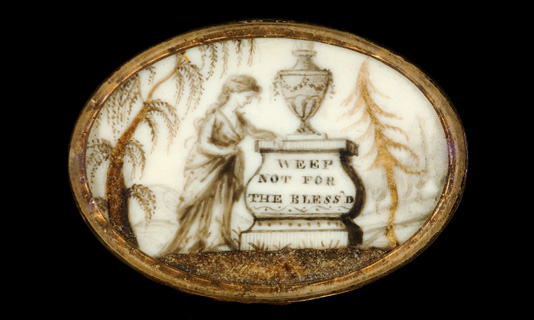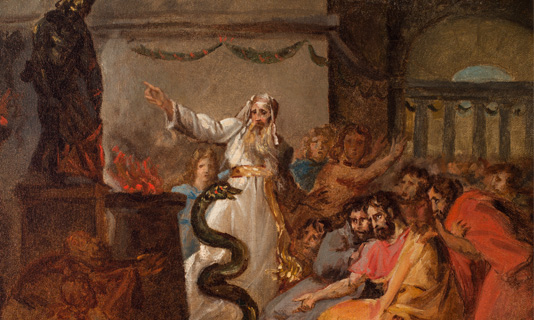About The Collection
Try to imagine life without photography – no pictures to document your birth, graduation from high school or even your wedding day. In a time before photography, how did people record important milestones and treasured memories?
Conceived as personal mementos and tokens of affection, miniature portraits are handheld paintings generally created with watercolor paint on thin sheets of ivory. These intimate images were carried or worn by both men and women as a means to keep loved ones close at heart, even when they were not physically present.
A Miniature History
Early miniature portrait painting evolved from medieval manuscript illuminations and classical portrait medallions from Ancient Greece and Rome. They became especially popular during the sixteenth-century reign of Elizabeth I of England and the popularity of these mementos spread from the court down to wealthy merchants. Originally painted on pieces of card or vellum (paper-like calfskin), ivory became the medium of choice around 1700. Ivory lent a natural luminescence to the paintings that made the sitter’s skin glow. This new medium allowed artists to create images of greater elegance and refinement than possible on vellum.
European settlers brought miniature portraits with them to colonial America. Colonists continued to desire miniatures and therefore turned to local artists. In contrast to European miniatures, characterized by a romantic and idealized style, early American miniatures are simple and more “realistic,” such as the circa 1740s image by Mary Roberts, America’s first woman miniaturist.
Even though Charleston was home to many great miniature painters, it also quickly became a destination for visiting and traveling artists. These artists, with different artistic backgrounds and techniques, influenced the production of Charlestonians. Two influential miniature artists who left a mark on Charleston were James Peale and Edward Greene Malbone. Both artists synthesized the sophistication of the European painters with the “realism” of American artists. Malbone visited Charleston several times and his style greatly influenced the work of Charles Fraser. Like Malbone, Fraser created elegant images of a number of Charleston’s prominent citizens.
Importance of Gibbes Miniature Collection
The first American miniature portraits were painted in Charleston, and today the Gibbes is home to one of the most prestigious portrait miniature collections in the United States. Containing more than 600 items, the collection spans nearly two hundred years and represents the work of over a hundred artists. It includes works by major American easel painters such as John Trumbull, Henry Benbridge, Charles Willson Peale, and Thomas Sully, as well as an exceptional inventory of works by notable miniature portrait specialists such as Mary Roberts, Edward Greene Malbone, and Charles Fraser. The Gibbes collection also contains important examples of American sitters painted abroad by British miniaturists such as John Smart and George Engleheart, and at home by significant French émigrés including Pierre Henri and Louis Antoine Collas who came to the United States for patronage.










